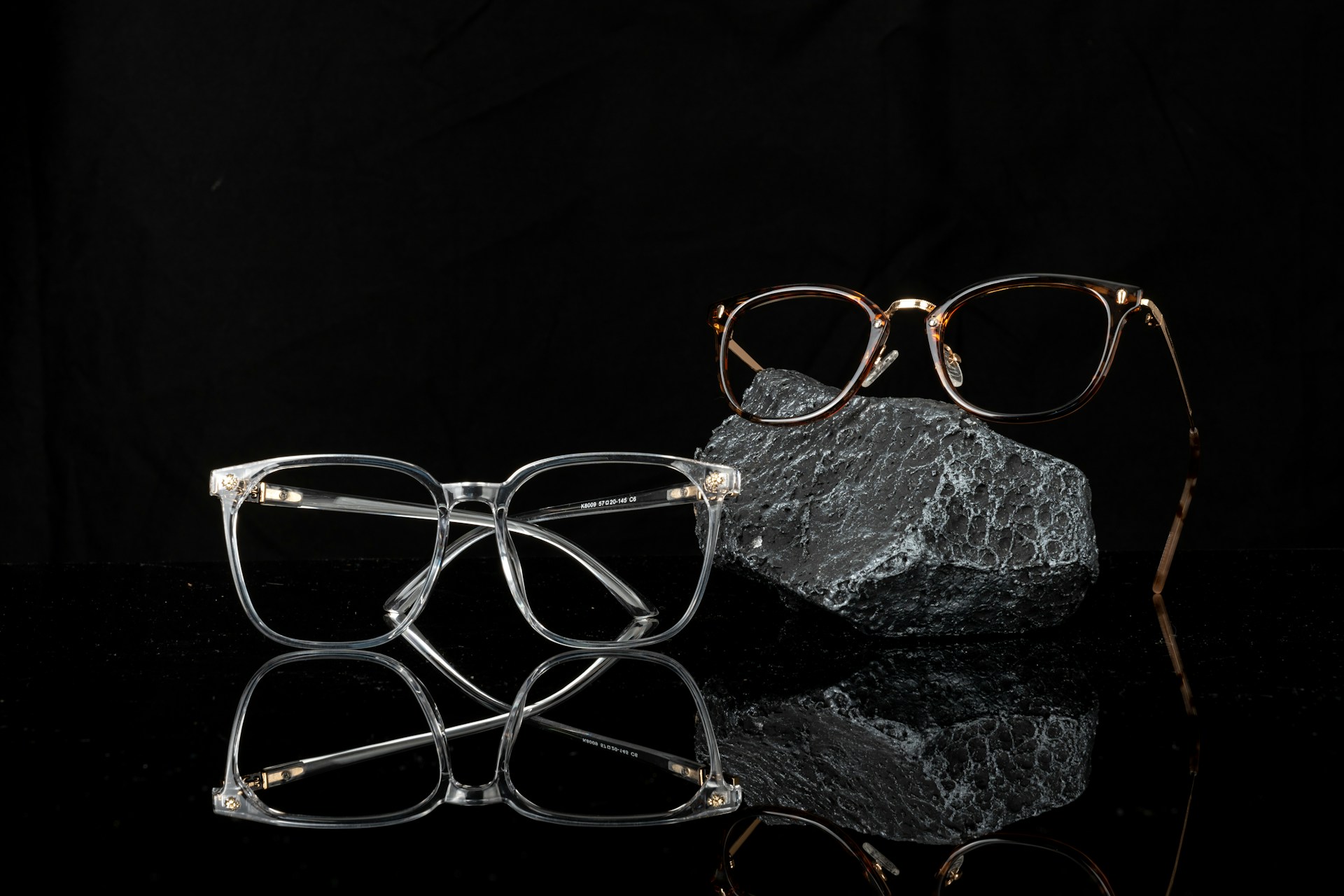
The evolution of eyeglasses reflects centuries of human ingenuity, from early attempts at magnification to today’s sleek designer frames. Once seen as purely functional tools, eyeglasses have transformed into essential fashion statements. This journey highlights how science, style, and culture have shaped what we wear on our faces to see the world clearly—and be seen by it.
Early Milestones in the Evolution of Eyeglasses
The evolution of eyeglasses began long before they became wearable. Ancient civilizations like the Egyptians and Romans experimented with primitive visual aids. Romans used glass spheres filled with water to magnify text, functioning like handheld magnifiers. These weren’t glasses as we know them, but they marked the first steps toward vision correction.
By the 13th century, the first true spectacles emerged in Italy. They featured two convex glass lenses held together by a rivet and mounted in frames made of wood, bone, or metal. Monks and scholars primarily used them to read, and they had to balance them on the nose or hold them by hand. Although basic, these spectacles marked a pivotal turning point in the evolution of eyeglasses, allowing people to wear vision aids for the first time.
As literacy spread across Europe, so did the demand for spectacles. Glass grinding techniques improved, making lenses clearer and more accurate. While still plain and utilitarian, these early eyeglasses laid the foundation for centuries of innovation.
Expanding Use and Functionality During the Renaissance
The Renaissance accelerated the evolution of eyeglasses with breakthroughs in optics. Artisans developed concave lenses to help people with nearsightedness, expanding eyeglasses’ usefulness beyond reading. Lens craftsmanship became more precise, and new designs improved usability.
Significant innovations emerged between the 17th and 18th centuries:
- Temple arms were added, letting glasses rest securely on the ears.
- Adjustable bridges improved comfort and fit.
- Bifocal lenses, attributed to Benjamin Franklin in the 1780s, allowed wearers to see both near and far without changing glasses.
These advancements made eyeglasses more practical and accessible. By the 1700s, they were no longer exclusive to scholars or the wealthy. Ordinary people used them, and society began to view them as everyday necessities rather than rare curiosities. This democratization was a crucial stage in the evolution of eyeglasses as functional, mass-used items.
Eyeglasses as Personal Style and Status Symbols
The 19th and 20th centuries transformed eyeglasses from mere medical aids into fashion statements. Industrialization made frames affordable and widely available, fueling creativity and variety. This era marked the evolution of eyeglasses into personal style markers.
By the early 1900s, eyeglasses came in distinctive shapes and materials: round, oval, square, horn-rimmed, and tortoiseshell. Wealthy individuals favored gold or silver frames as status symbols, while colorful plastics became popular with the masses. People could now choose frames to match their personalities.
Hollywood helped cement eyewear as fashion. Iconic figures like Audrey Hepburn, James Dean, and Marilyn Monroe made glasses and sunglasses glamorous. Designer brands entered the scene, offering signature eyeglass collections. Wearing glasses shifted from being a sign of weakness to a way to enhance one’s image. This cultural shift was a major milestone in the evolution of eyeglasses.
Meanwhile, technology kept improving lenses. Lightweight plastics replaced heavy glass, and anti-glare coatings improved comfort. Eyeglasses became more stylish, durable, and enjoyable to wear than ever before.
The Modern Era: Eyeglasses as Lifestyle and Fashion Statements
Today, the evolution of eyeglasses has reached a point where they are central to both vision care and fashion. The modern eyewear industry offers countless frame shapes, materials, and colors to suit every taste—from minimalist rimless frames to oversized statement pieces.
Key modern trends include:
- Customization: Lenses can include prescription strength, anti-reflective coatings, blue light filters, or photochromic transitions.
- Sustainability: Many brands now use recycled or biodegradable materials to produce eco-friendly frames.
- Designer collaborations: Luxury fashion houses release exclusive eyewear lines, reinforcing glasses as coveted style items.
- Virtual try-ons: Augmented reality lets customers see how frames look before buying, transforming the shopping experience.
Eyeglasses are now chosen as much for their aesthetic appeal as their medical function. People pick frames that express their personalities—bold, retro, professional, artistic, or minimalist. Some even wear non-prescription glasses purely for style, showing how deeply embedded they are in personal branding.
Technology is pushing the evolution of eyeglasses even further. Smart glasses with built-in displays, fitness tracking, and voice assistants are emerging, hinting at a future where eyewear integrates seamlessly with digital life. As these innovations advance, eyeglasses may become multifunctional hubs that merge style, health, and technology.
A Timeless Journey of Vision and Style
The evolution of eyeglasses spans centuries of scientific breakthroughs, cultural shifts, and design revolutions. From ancient magnifiers to Renaissance spectacles, from Hollywood icons to smart glasses, their journey shows how a medical necessity became a symbol of identity and fashion.
Today, eyeglasses embody clarity and self-expression. They help us see the world—and show the world who we are. As technology and fashion continue to merge, the next chapter in the evolution of eyeglasses promises even more innovation, making eyewear smarter, sleeker, and more stylish than ever before.